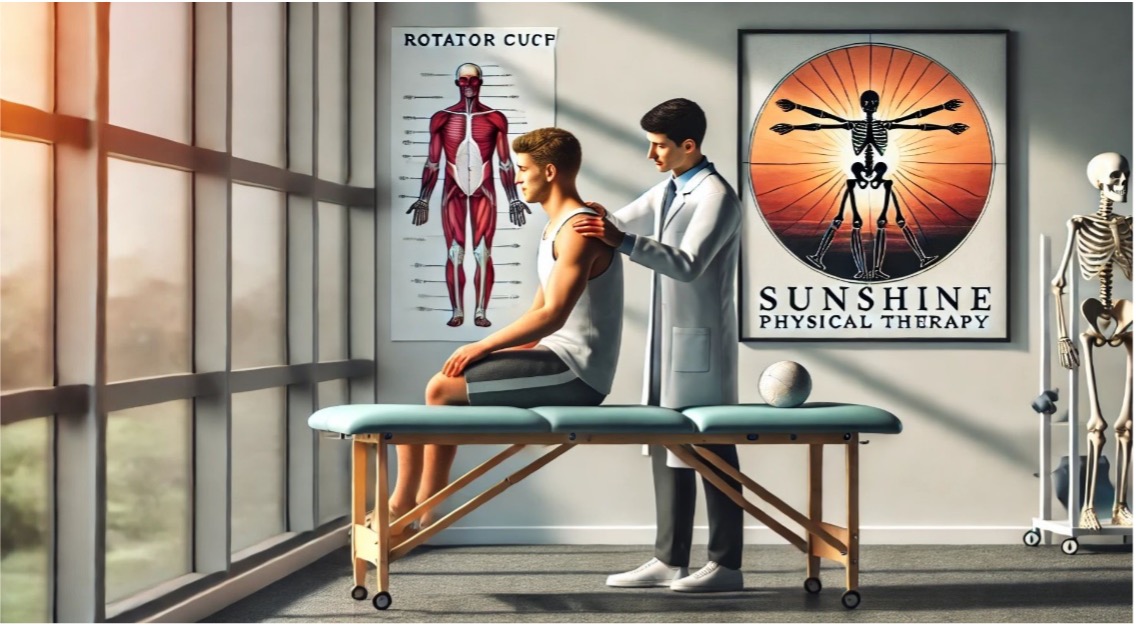-
-
Call Us :
(703) 313-0044 -
Mon - Fri 9:00 - 6:00
Sat - Sun Closed
Call Us :
(703) 313-0044Mon - Fri 9:00 - 6:00
Sat - Sun Closed

Adhesive capsulitis, commonly known as frozen shoulder, is a condition characterized by pain, stiffness, and limited range of motion in the shoulder joint. It can severely impact daily activities, making tasks like dressing, lifting, or reaching overhead challenging. Physical therapy is a cornerstone in managing adhesive capsulitis, offering targeted solutions to alleviate symptoms and restore shoulder function.
What Causes Adhesive Capsulitis?
Adhesive capsulitis develops when the capsule surrounding the shoulder joint thickens and tightens, restricting movement. The condition typically progresses through three stages:
1.Freezing Stage: Pain and progressive stiffness increase, limiting shoulder motion.
2.Frozen Stage: Pain may subside, but stiffness and limited mobility persist.
3.Thawing Stage: Gradual improvement in range of motion and reduced stiffness.
Risk factors include:
• Diabetes or thyroid disorders
• Prolonged immobility due to injury or surgery
• Age (commonly affects individuals between 40-60 years)
• Gender (more common in women)
How Physical Therapy Helps Adhesive Capsulitis
Physical therapy aims to reduce pain, improve shoulder mobility, and restore strength. A tailored approach ensures treatment is adapted to the specific stage of the condition.
1. Pain Management
• Manual Therapy: Gentle joint mobilization techniques help reduce stiffness and discomfort.
• Modalities: Heat packs, ultrasound therapy, dry needling or electrical stimulation may alleviate pain and prepare the joint for exercises.
2. Restoring Mobility
• Stretching Exercises: Passive and active stretches target the joint capsule and surrounding muscles to improve flexibility.
• Examples: Pendulum swings, cross-body shoulder stretches.
• Range of Motion Exercises: Gradual movements help maintain or increase joint mobility.
3. Strengthening the Shoulder
As mobility improves, strengthening exercises focus on rebuilding muscle support around the shoulder joint. Resistance bands or light weights are often incorporated during the thawing stage.
4. Posture and Functional Training
Poor posture can exacerbate shoulder stiffness. Physical therapists guide patients on proper posture and ergonomic adjustments to reduce strain on the shoulder during daily activities.
Benefits of Physical Therapy for Frozen Shoulder
• Non-invasive and drug-free treatment approach.
• Improved range of motion and reduced stiffness.
• Faster recovery and prevention of recurrence.
• Guidance on safe, at-home exercises for long-term
management.
When to Seek Physical Therapy
If you experience persistent shoulder pain, stiffness, or difficulty performing everyday tasks, consulting a physical therapist is essential. Early intervention can prevent further complications and promote faster recovery.
Conclusion
Adhesive capsulitis can be debilitating, but physical therapy offers a path to recovery through customized treatment plans. By addressing pain, restoring mobility, and improving strength, physical therapy empowers individuals to regain independence and resume their normal activities.
Don’t let frozen shoulder freeze your life! Contact us today to schedule your consultation and begin your journey to recovery.